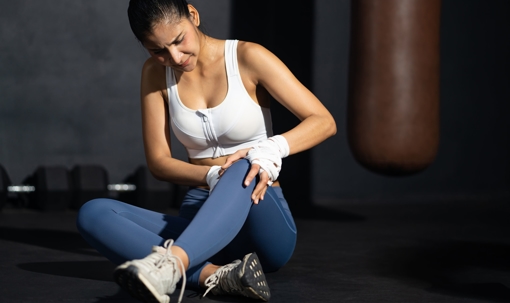This is part two, of a three-part blog series. Stay tuned for the last blog to complete our discussion of Patellofemoral Syndrome, and how this can be treated!
Patellofemoral syndrome can be caused by an acute injury, like falling on the knee. But more often, it happens either as an overuse injury or gradually over time for no apparent reason.
- As discussed in Part 1, the kneecap (patella) glides in a groove in the long thigh bone (femur). If there is an asymmetrical pull on this gliding action or muscle imbalance around the knee, it can cause irritation under the kneecap.
- Quadriceps weakness: Studies have shown that people that have symptoms of patellofemoral syndrome have weaker quadriceps. Strengthening the quadriceps is the treatment of choice for patellofemoral syndrome.
- Hip muscle weakness: People with patellofemoral syndrome often have weakness in their hip abductors (muscles that move the leg out to the side), extensors (muscles that move the leg backwards) and external rotators (muscles that rotate the leg). When these muscles are weak, the knee often falls inward during squatting, stair climbing and jumping. This is termed “dynamic valgus” and technically means the leg adducts and internally rotates. Because most of the studies done are of people that already have patellofemoral syndrome, it is not clear if the quadricep and hip muscle weakness is a risk factor for developing patellofemoral syndrome or if the weakness happens due to the patellofemoral syndrome. Either way, treatment is aimed at strengthening these muscles.
- Lack of flexibility. Studies have shown that patients with patellofemoral symptoms have less flexibility in one or more of the following: quadriceps (muscle on the front of the thigh), hamstrings (muscle on the back of the thigh), gastrocnemius/soleus (calf muscle), IT band (connective tissue on the side of the thigh) and lateral retinaculum (connective tissue on the side of the patella/kneecap). The lack of flexibility in one or more of these structures may increase the compression of the patella/kneecap into the femur (long thigh bone) or it may alter the way the patella/kneecap moves in the groove.
- Impaired movement pattern: Sometimes people have “normal” strength but the muscles do not coordinate the movement pattern properly. As discussed in #3 above, a common impaired movement pattern in people with patellofemoral syndrome is for the knee to fall in during squatting, stairs and jumping. Sometimes, the muscles are strong enough, but the person still moves with this impaired pattern and it needs to be re-trained. Another impaired movement pattern is that people with patellofemoral syndrome tend to walk, run and do stairs with less knee flexion than “normals”.
- Excessive foot pronation. Theoretically this makes sense. A normal amount of pronation with walking and running is normal. When your heel strikes the ground, pronation helps to cushion the shock of the foot landing. Excessive pronation is when the foot rolls in too much. This can cause the hip and knee to rotate inward, creating an asymmetrical line of force on the kneecap/ patella. The excessive pronation interferes with the next phase of walking/running when the foot should be supinating or rolling out to assist in propelling the body forward. However, studies on the relationship of excessive pronation and patellofemoral syndrome are conflicting.
- BMI: At one time, it was thought that body mass index (BMI) was a risk factor for developing patellofemoral syndrome but a recent study indicates that this is not the case.
Patellofemoral Syndrome Part 3 will discuss the treatment of patellofemoral syndrome.
References:
- Patellofemoral pain syndrome. Physiopedia website. Accessed at: https://www.physio-pedia.com/Patellofemoral_Pain_Syndrome
- Willy RW, Hoglund LT, Barton CJ, Bolgla LA, Scalzitti DA, Logerstedt DS, Lynch AD, Snyder-Mackler L, McDonough CM. Patellofemoral pain. J Orthop Sports Phys Ther 2019 Sep 49(9): CPG1-CPG95.

